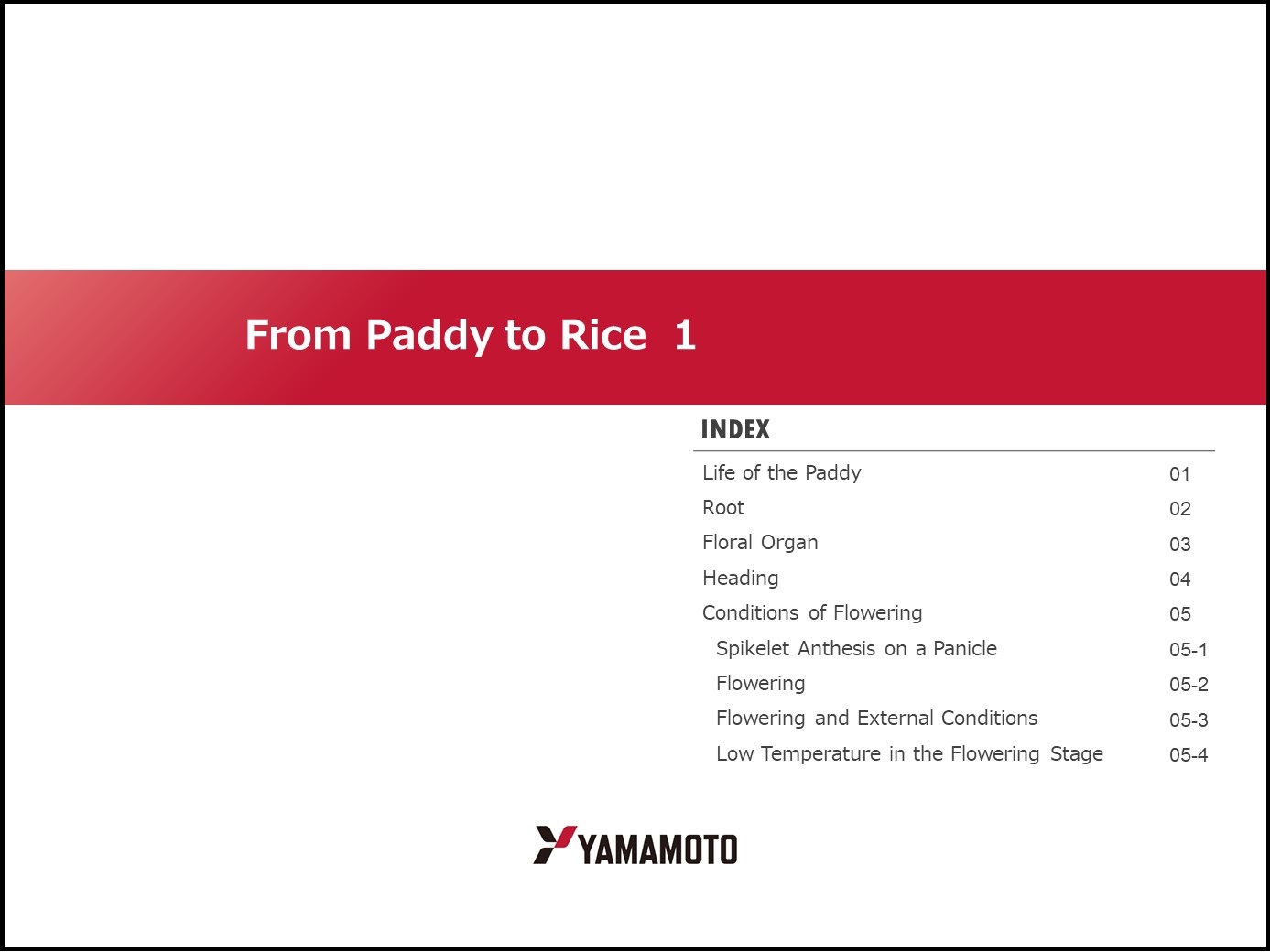6. From Paddy to Rice 1
- INDEX -
Life of the Paddy
Root
Floral Organ
Heading
Conditions of Flowering
Spikelet Anthesis on a Panicle
Flowering
Flowering and External Conditions
Low Temperature in the Flowering Stage
Life of the Paddy
Life of the paddy or rice plant starts with germination. After germination, the paddy seeding grows by developing new leaves one after another. This is called the vegetative growth stage, in which the paddy differentiates leaves at growing point for further development.
When approximately 75% of the total number of leaves to be developed in its whole life (flag leaf position) has developed, a change takes place in the growing point which forms the primodium of leaves. Instead of differentiating leaves, it now starts to differentiate “the organs that become the heat” (young panicle). This stage is called the necknode differentiation stage.
The next stage is a panicle formation stage, which differentiates primary rachis branches, secondary rachis branches, and spikelet that will construct the head.
The period between the panicle formation stage and ripening of the paddy, via heading and flowering stages, is called the reproductive growth stage.
Within 7-10 days after the development of the last leaf ( flag leaf), heading begins, followed in the next 6-7 days by flowering of the spikelet and its fertilization successively. In approximately 30 days after the flowering, carbohydrate accumulation in the caryopsis for the paddy is the “seed” for its next generation botanically.
After it is harvested and threshed, it is called “paddy”. When the caryopsis is taken out of the hull (husks), it is called “brown rice”, which then turns “rice” when milled and served as food. Generally speaking, when paddy is separated from the rice plant (threshing), it turns “rice”.
Root
The root supports the growth of leaves, stems, and the floral organs throughout the life of paddy. The root of paddy consists of seminal root, which has been formed in the embryo, and several adventitious roots with root caps that grow from each node, both of which will produce branched roots (primary, second, third, and so on). Each root consists of a meristem at its distal end and an elongation zone located right next to the base of the meristem. Meristems generate new cells, while nourishment and water are taken from elongation zone and basal part of it. The roots usually extend themselves in cultivated soil, but the roots of an upland rice reach deeper rooting zone, and therefore, the rice resists a long drought. The reason the rice can grow under submerged condition is that the cortex tissue formed between the outer and inner tissues of the root will contain air rooms that work together with the tissue of the culm, to take oxygen from the air and supply it to the soil around the root. Paddy, rush, and barnyard millet of the gramineous crop, in particular, are known to strongly have this characteristic.
